18 July 2024
Nearing the end of the MaMa course
Written by Sjanne Schoone, Master student Earth Sciences, Earth and Climate, at Vrije Universiteit Amsterdam
Once we had collected all the data in the lab, it was time to write. My group is researching the impact that the Wadden Sea can have for storage of CO2 in a changing climate. I chose this project because climate change is a hot topic and I am interested to see in how many ways we are able to make a difference to the changing climate. However, the topic was more complicated than we thought and included a lot of chemistry. To get the whole project group on an equal level, our supervisor had prepared a “Chemistry for dummies” - lecture on Monday. We were able to ask a lot of questions and from there, we could start interpreting the data that we had collected on the research vessel Wim Wolff and in the lab at NIOZ.
We spent both Tuesday and Wednesday working on our results, hoping we could find an answer to our “million dollar question”. In my group, each group member has a different background and we each feel more comfortable with different tasks. Quickly, we were able to divide certain tasks based on our talent. People that felt comfortable with programs like R-studio and Python worked on the graphs and people that felt more comfortable with creating a coherent story for the audience went on a hunt for relevant articles on Google Scholar. I was really happy to see how smoothly this went.
Because of our nice planning, we were finished before dinner and there was still enough relaxing time left. So our evenings were spent with chatting with all the MaMa course students. It felt nice that we could all clear our heads in the evening. We played games, sung songs and danced until the skies turned pink at the Potvis and the sun went down.
Then all of a sudden, it is Thursday: the second to last day. My project group is quite relaxed as today is all about making our presentation and we don’t have to interpret any data anymore. If you walk through the NIOZ, you will able to see focused project groups staring at their laptops everywhere. Today is a very sunny day and the sun helps us to stay positive. After lunch, we did a “test-presentation” for our supervisors after which we received critical but very helpful feedback. We fine-tuned the presentation. Now, all that there is left for me to do, is pack my bags and have a good last night of sleep at the Potvis campus. It is crazy to think that we will step out of our “MaMa course-bubble” tomorrow but I have enjoyed every bit of it.
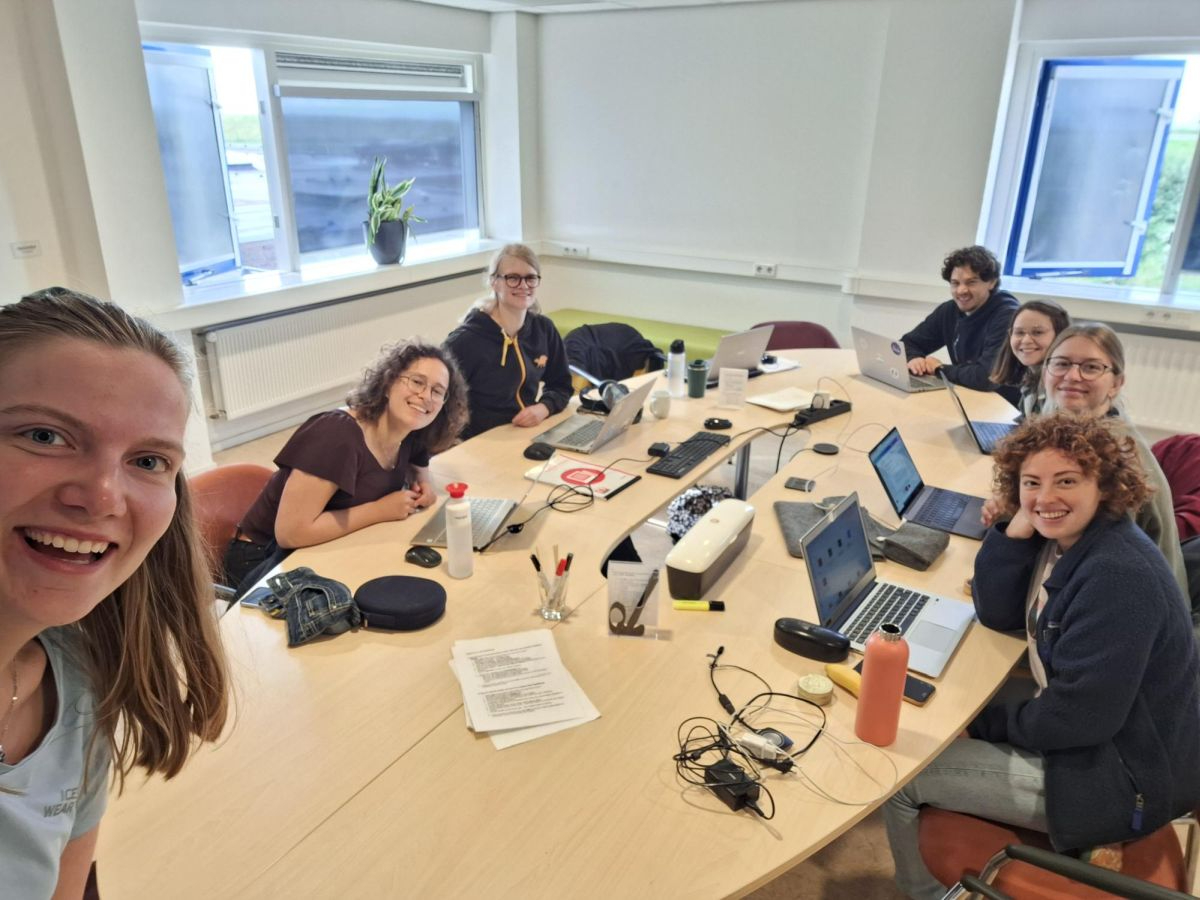
17 July 2024
An evening at Paal 9
Written by Madison Cicha, Master student Biology at Radboud University, Chiara Stanchieri, Master student Climate Physics at Utrecht University, and Maike Woith, Master student Biological Sciences at Konstanz University
Wednesday night, shockingly, boasted gorgeous weather and a late-evening sunset. A large group of the MaMa students decided to take advantage of the sunshine and visit the beach at Paal 9! We biked over together, though Andres took the lazy route and went via car with Qing, and arrived just in time for a sunset swim. It was a little chilly in the sea, but super fun and refreshing to be in the water.
After some time playing chicken and diving through the little waves, we relaxed on the beach with a game of frisbee and soccer (ahem, football). We watched a wonderful sunset together and waited until the moon was high in the sky to bike all the way back to the NIOZ harbor. It was a lovely time to wind down our two weeks together!
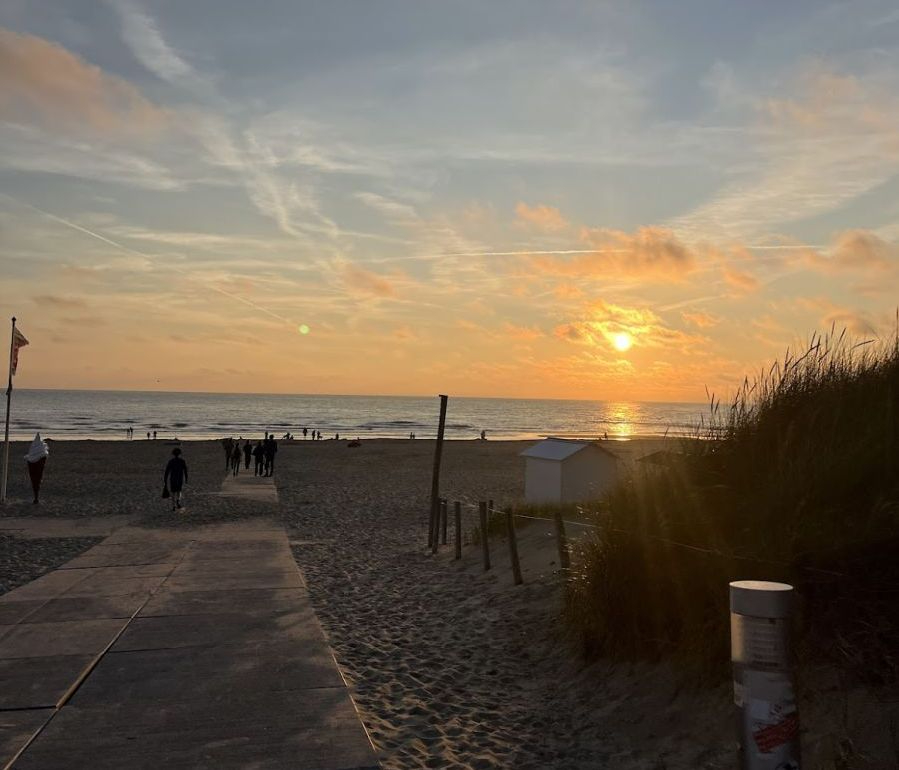
Sea spark sightings!
Written by Madison Cicha, Master student Biology at Radboud University, Chiara Stanchieri, Master student Climate Physics at Utrecht University, and Maike Woith, Master student Biological Sciences at Konstanz University
Sleeping on the Texelstroom was certainly an adventure in its own right. However, one extreme highlight of our time “at sea” was observing the bioluminescent plankton Noctiluca scintillans, or sea sparks (as we called them).
On Thursday night, we were making our trek back to the boat from the bathroom when we noticed a strange glow emanating from the shoreline. In pajamas with our teeth brushed for bed, we climbed down the steep rocks onto a small beach in the corner of the NIOZ harbor to investigate further. Just as we suspected (and hoped), the small waves washing ashore were lined with glowing sea sparks! Despite slowly sinking into the muddy sand, we spent nearly an hour playing like kids in the water. The plankton glowed anytime they were touched, which meant that we could throw sand over the surface and see a full light show-- they even lit up when you stomped on the shore where they had washed up. If you dunked your hand in the water, of course they would light up around your fingers, but even upon pulling your hand out of the water, the plankton remained on your skin and continued to sparkle for a solid few seconds. They were shockingly bright, and it truly felt like a once-in-a-lifetime experience!
Over the rest of our stay on the Texelstroom, we noticed our sea spark friends almost every night, but they never shone quite as bright as that Thursday evening. We’ll remember the sight for many years to come!
15 July 2024
Exploring the island
Written by Marloes Vaessen, Master student Marine Sciences at Utrecht University
Over the weekend, we had some time to recover from all the impressions we gained during the first week of the course. Some of us started off by going to a local bar on Friday night. Much to our surprise, the bar transitioned into more of a club as the evening progressed, so we happily danced to a nice mix of well-known and not-so-well-known songs.
On Saturday, Henko, one of the course coordinators, organised an excursion for anyone who was interested in getting to know the island a bit better. Although I didn’t join myself, my roommate tells me they took a tour over the dykes and through the dunes, while Henko talked about how Texel’s coasts developed over time. Despite the heavy rain, they still had a good time with a nice picnic in between. In the meantime, I decided to visit Museum Kaap Skil to see the famous dress that had been recovered in remarkably good condition after spending almost 400 years in sea. Definitely worth the trip!
On Sunday, we organised our own little field trip to Ecomare, a sanctuary for seals and marine birds. We learned about how they find out about animals in need and all the steps they take to nurse them back to health and get them back to sea. Most importantly, we saw some very cute seal pups and baby birds. Afterwards, we visited Texel’s capital, Den Burg, for some shopping and coffee. Once we got back to our accommodation, it was time to get back to work to finalise our presentations for Monday. Time for another busy week!
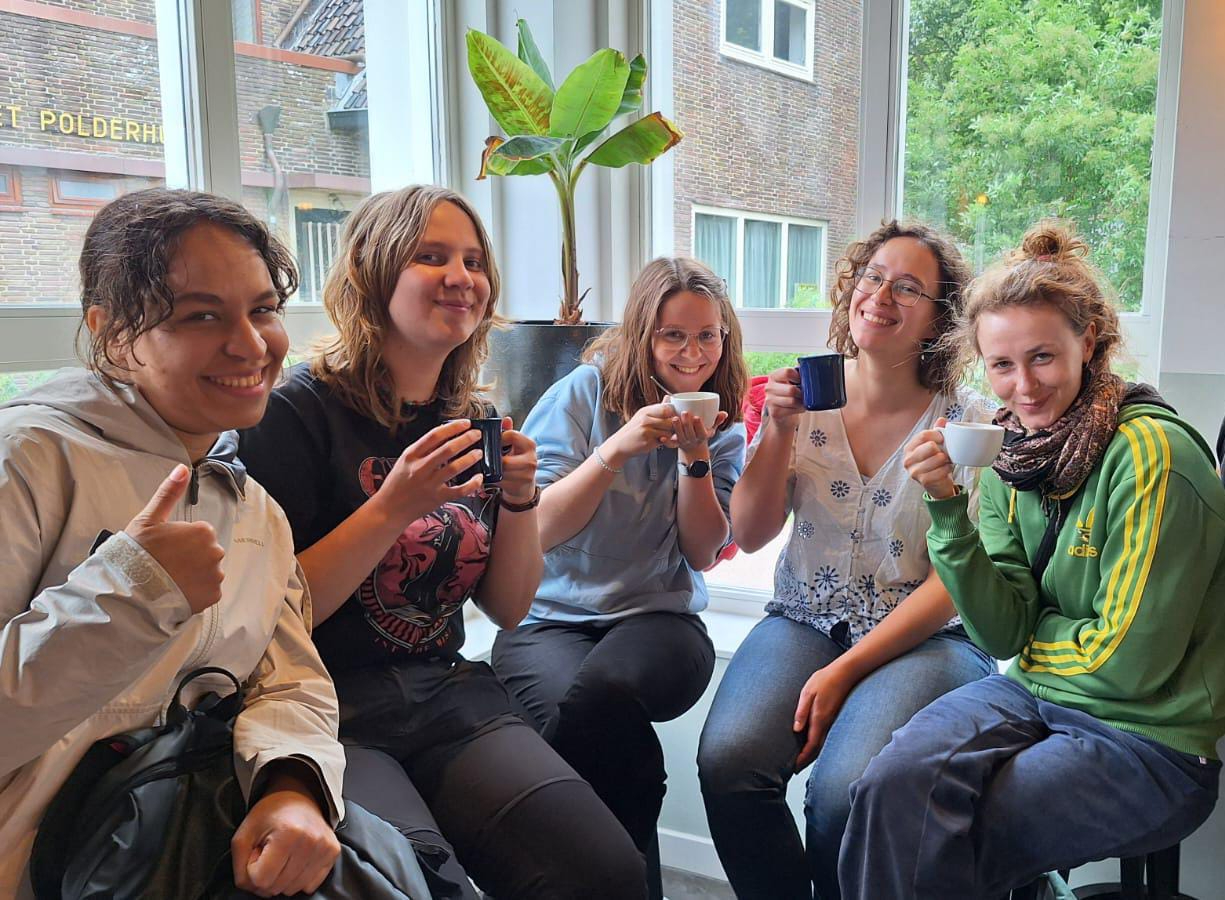
13 July 2024
A rainy excursion
Written by Chiara Stanchieri, Master student Climate Physics at Utrecht University, Maike Woith, Master student Biological Sciences at Konstanz University, and Madison Cicha, Master student Biology at Radboud University
On Saturday, an amazing excursion was organized. The weather tried to stop us, but our spirits were still high. We left around 10.30 after the first rain-shower, though some people already chickened out (Nikky).
Henko brought 13 motivated students to the first stop: the supermarket for a wonderful picnic. While we were there, the second heavy rain-shower kept us sheltering in the produce aisle for extra 20 minutes. When the rain stopped for a second, we decided to start our bike journey towards the dunes. However, already before everyone was at their bikes, another rain-shower happened, but this time we decided to ignore it and brave the weather. We had to overcome the high elevation of 4 meters above sea level. An amazing view was the reward of our effort, in fact we were in Den Hoorn where a couple hundred years ago there was the shoreline. Today, the shoreline is about 2 km away from that cute viewpoint.
After a small stop at 14 meters above the sea level at a bunker, the time for the picnic has come! All the fruits were nicely washed by the rain, which kept us company through lunch.
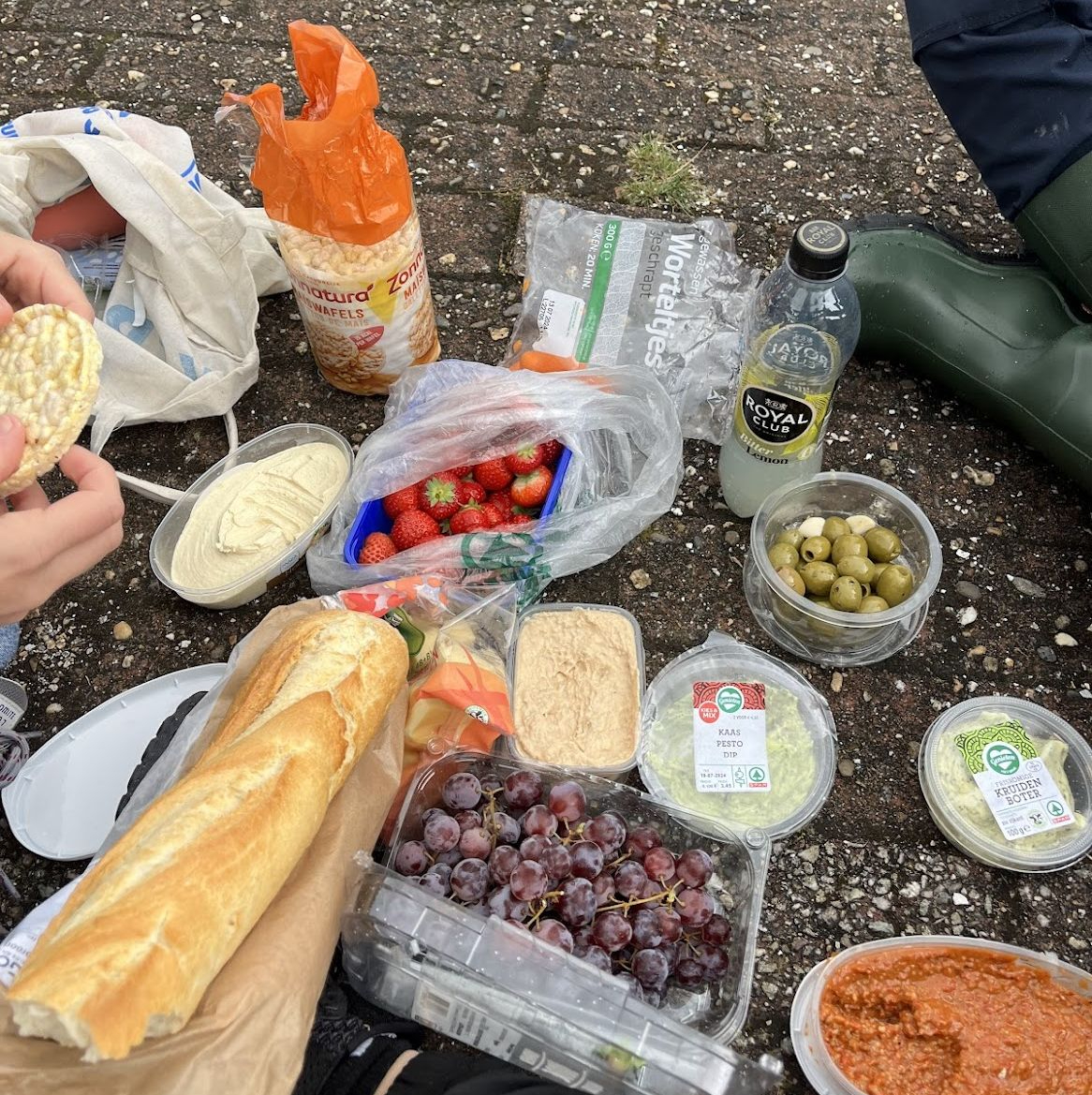
Finally, after our picnic shower, we made it to the heart of our excursion—the dunes! Unfortunately, by this time, the torrential rains had arrived, and we truly had to brave the elements. Nevertheless, we persisted, parked our bikes, walked through all the previous shorelines that had now become dunes, crossed various tidal pools, and made it all the way to the North Sea! Once we had arrived on the beach, Henko said “Well, we’re already wet, might as well make it to the sea,” as we wadded through the shallow water left behind by higher tidal times. This experience was the first time we had touched the North Sea and it was surprisingly warm, though maybe that was just in comparison to the windy air. We observed various shells, crabs, and even cuttlefish skeletons.
Ultimately, despite the weather, the company was great and we truly enjoyed ourselves on the Saturday excursion. Luckily, we could return to the Texelstroom, have a warm shower, order pizzas, and end the night with wine and games.
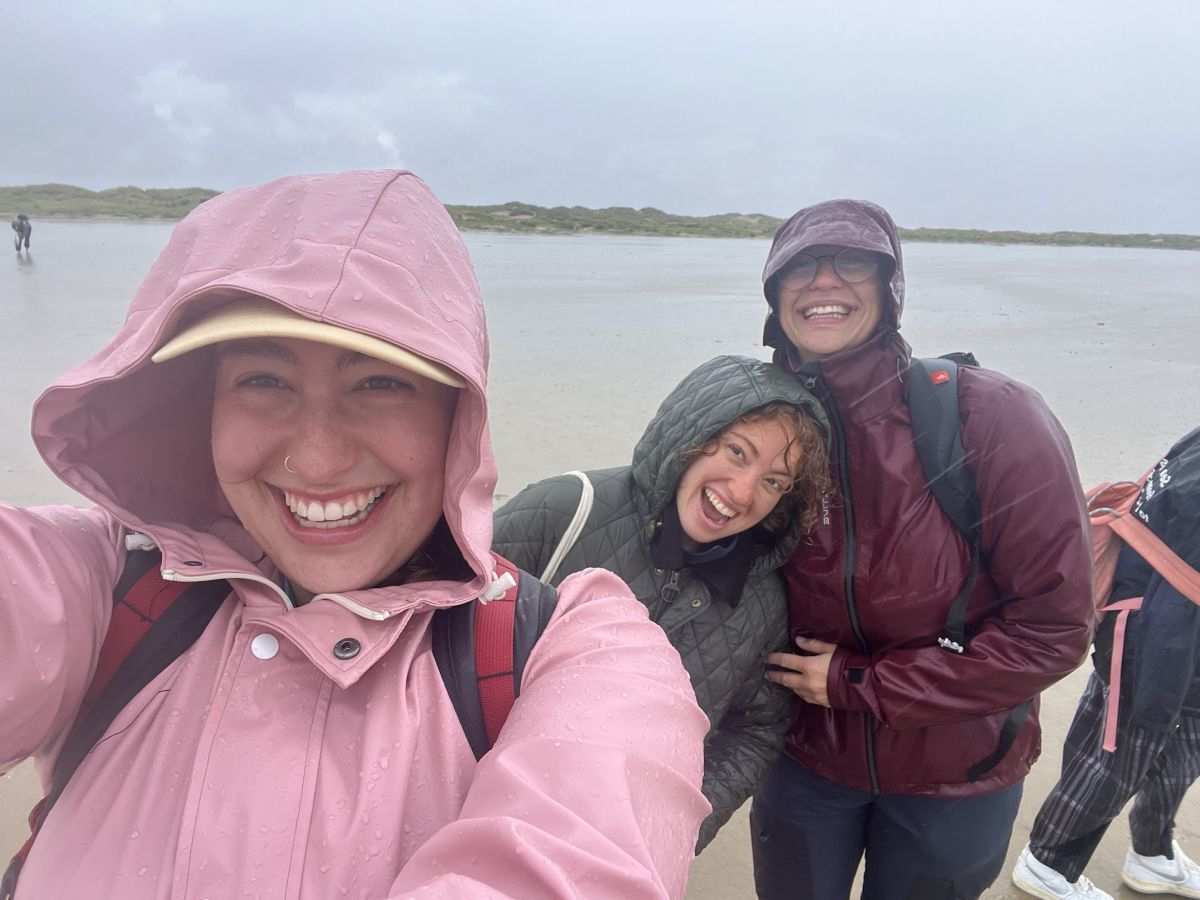
12 July 2024
Hands on the data!
Written by Mira Anguelova, Master student Climate Physics at Utrecht University
The first week of the MaMa 2024 summer course has reached its end, and many of us master students have wonderful memories and pictures of it! As we now prepare for our project presentations, our task for the second week of the course will be to work with the data we got from the first week. Each project works with slightly different data, so we’ve got benthos samples from along the seashore, surface and deep (around 20-25m depth) water samples taken during the 13-hour station at the research vessel Wim Wolff, lots of salinity data as well as temperature profiles from the beautiful CTD on board, and much more. The most exciting part of it? We were on the backstage of getting the data :)
Quite a significant share of data scientists works with already processed data - ready to go through manipulation and plotting. And that has been my experience as well up until now, with hydrographic and meteorological data. This summer course provided us with insights not only on how the data is collected, but also on what can go wrong during the process of getting it and how to deal with it afterwards so that we’re still able to use it. In Project 1 (on tidal dynamics), for example, we’re all working with data from the CTD and ADCP from the 10th of July, and we were there on board of the research vessel Wim Wolff when those were in action! Some CTD castings were not perfect, and during the first few hours of the day there was a connector problem with the CTD that had to be taken care of. These moments happen all the time with data collection and they taught us that we have to be aware of conditions and accidents later on when we’re looking at our final results!
There’s something special about working with information that was collected before our eyes; it gives an extra feeling to it all. And in such a beautiful region! Well, now I’m off for another meeting with my project group, so I wish good luck for everyone out there working on their projects! :)
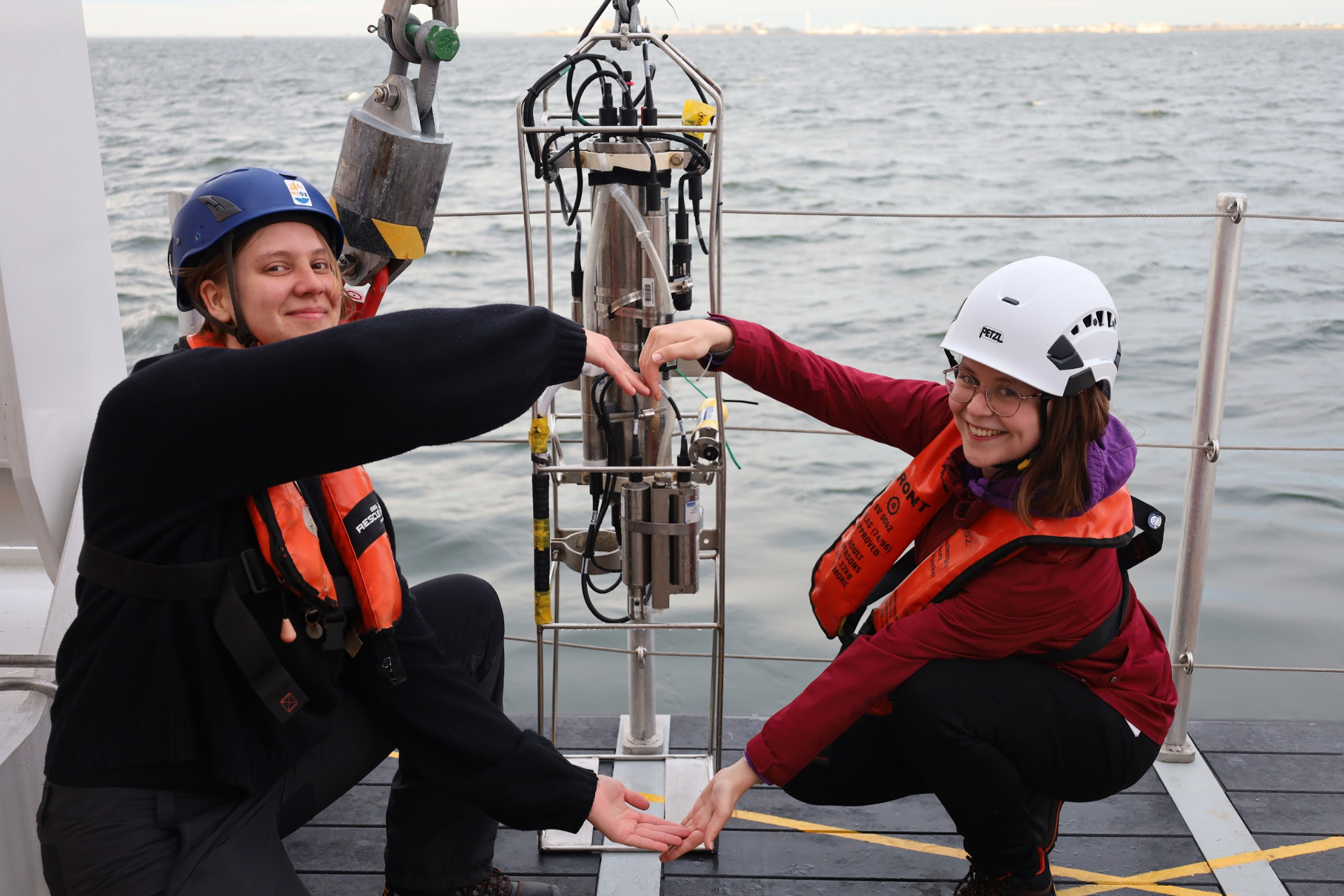
11 July 2024
Time for some hands-on action! – Student Projects at NIOZ
Written by Astrid Moosmüller, Master student Biology at Radboud University
It is Thursday of the first week, which means that all group projects have kicked off! Although we have been quite active in the previous days collecting samples and data for all projects, it is now that things have gotten more serious. Students have finally settled into one of the many group projects that were presented earlier in the week and have chosen to work on them for the remainder of the course. Most groups are formed based on student’s selected preferences, which brings together students from diverse study backgrounds. In our dorm room, all my roommates and I are involved in different projects, so we always look forward to coming back together at the end of the day to catch up. For instance, one of us had an extra day on board of the RV Wim Wolff and enjoyed a treat on the mainland, while another started processing lots of coding data from the research vessel, and yet another began examining samples taken from it!
I was in one of the newly added projects for the course: working with fungi that have the potential to degrade oil! On our very first day, we attempted to cultivate them in the lab and measure their activity, which introduced us to many laboratories, machines, and techniques that we will be using in the coming days. Soon, we will hear about everyone’s initial progress and what the different project results might look like by the end of the course. For now, the weekend is approaching, and many students are planning to stay around Texel to explore the various activities available on the island!
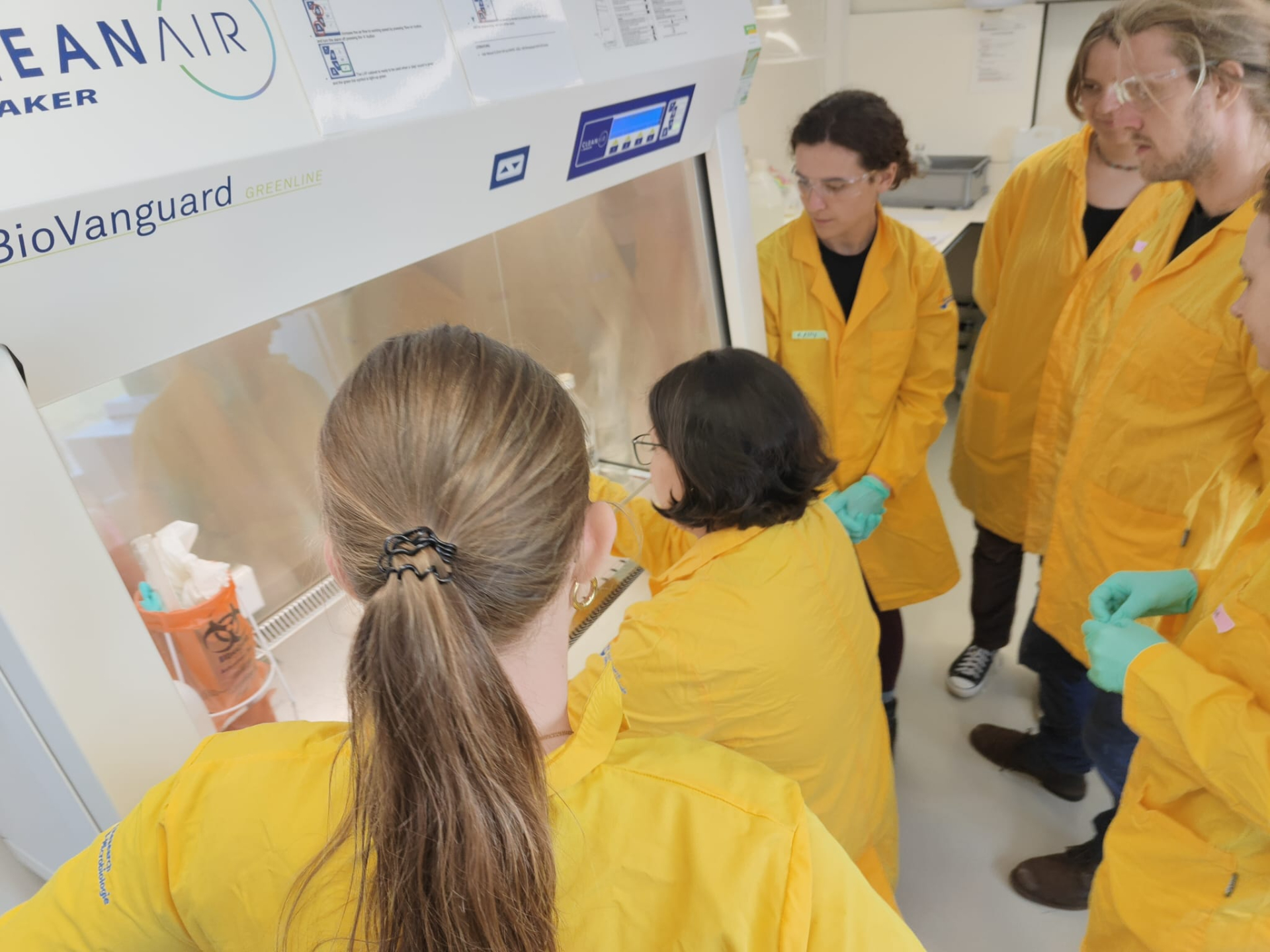
10 July 2024
Going on board
Written by Sjanne Schoone, Master student Earth Sciences, Earth and Climate, at Vrije Universiteit Amsterdam
This day started with a lab tour at the molecular lab where you can see ‘CSI’-stuff in real life. Here, they work with DNA and RNA and they can use it for multiple things. It was really nice to see these futuristic labs. They even use robots for processing samples so it all stays super clean. Then, we went on from ‘CSI-NIOZ’ to the moment we had all been waiting for: ship time!
Early in the morning at 5:30am, the brand new NIOZ boat ‘Wim Wolff’ went off to a station in the Waddensea where it would stay for 13 hours. Within those hours, several groups went on the boat to do measurements. We went aboard on the Wim Wolff for four hours around 10:00am. During this period, we were allowed to walk around on the ship and look at the fancy cabins (there is even a gym aboard!). But of course, there was also some serious work to do. A so-called slurf was installed in the water to pump water up so we could store it in bottles. These samples will later be used for research on sediment in the Waddensea. A CTD (Conductivity Temperature Depth) was also brought down into the water. This device can measure the salinity, temperature and depth. Apart from the sampling, we also had to go upstairs to the bridge where we learned how to log the data. For example, every time the CTD went in, we would log it into the system to keep track of all the measurements we had done.
It was very nice to be on the boat and the weather was good so thankfully, no one got seasick. The crew on the boat also loved to answer all of our questions and it was cool to hear their experiences from previous cruises.
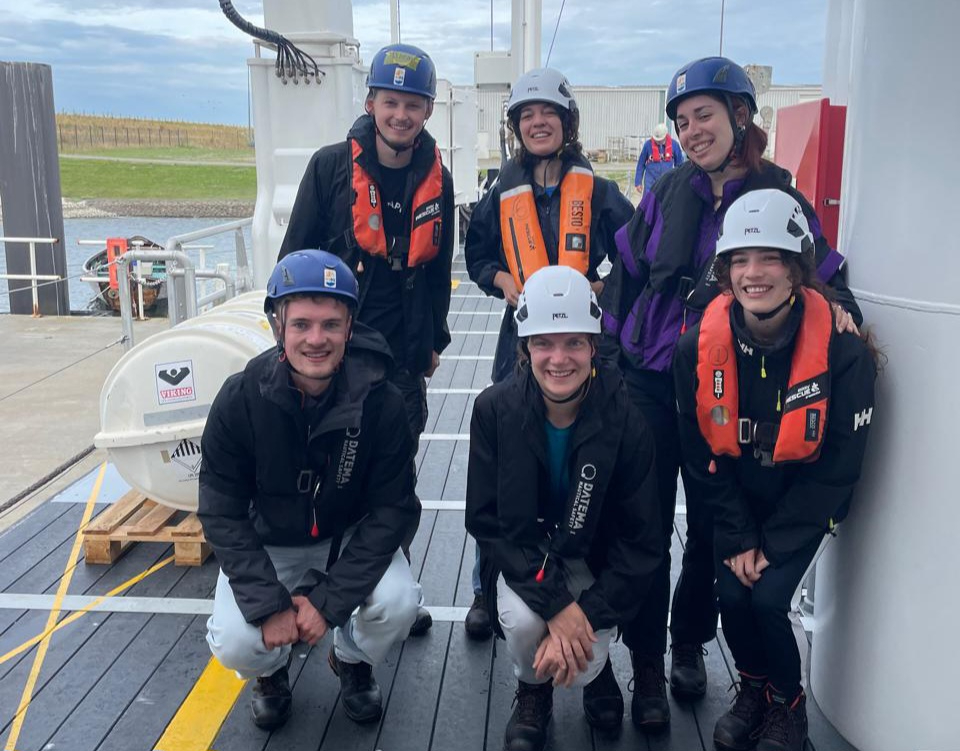
9 July 2024
Second day of the MaMa course
Written by Paulien Koster, Master student Climate Physics at Utrecht University
On the second day of MaMa, the time was ripe for the start of the practical programme! With the lab tour we got a little taste (even literal!) of the work being done at NIOZ.
Going by the fine mechanical service showed us that the way of making instruments for observations in deep ocean is a science on its own. Creating an instrument that can exactly do what one researcher wants, takes a lot of knowledge and also creativity. It is for example extremely important to regulate the pressure within instruments that make observations in the deep ocean at 6 km depth and choose the right materials for these instruments as well. At the fine mechanical service there even was an ocean glider being rebuild for public showings. The gliders can go up and down through the water only by shifting a weight inside it.
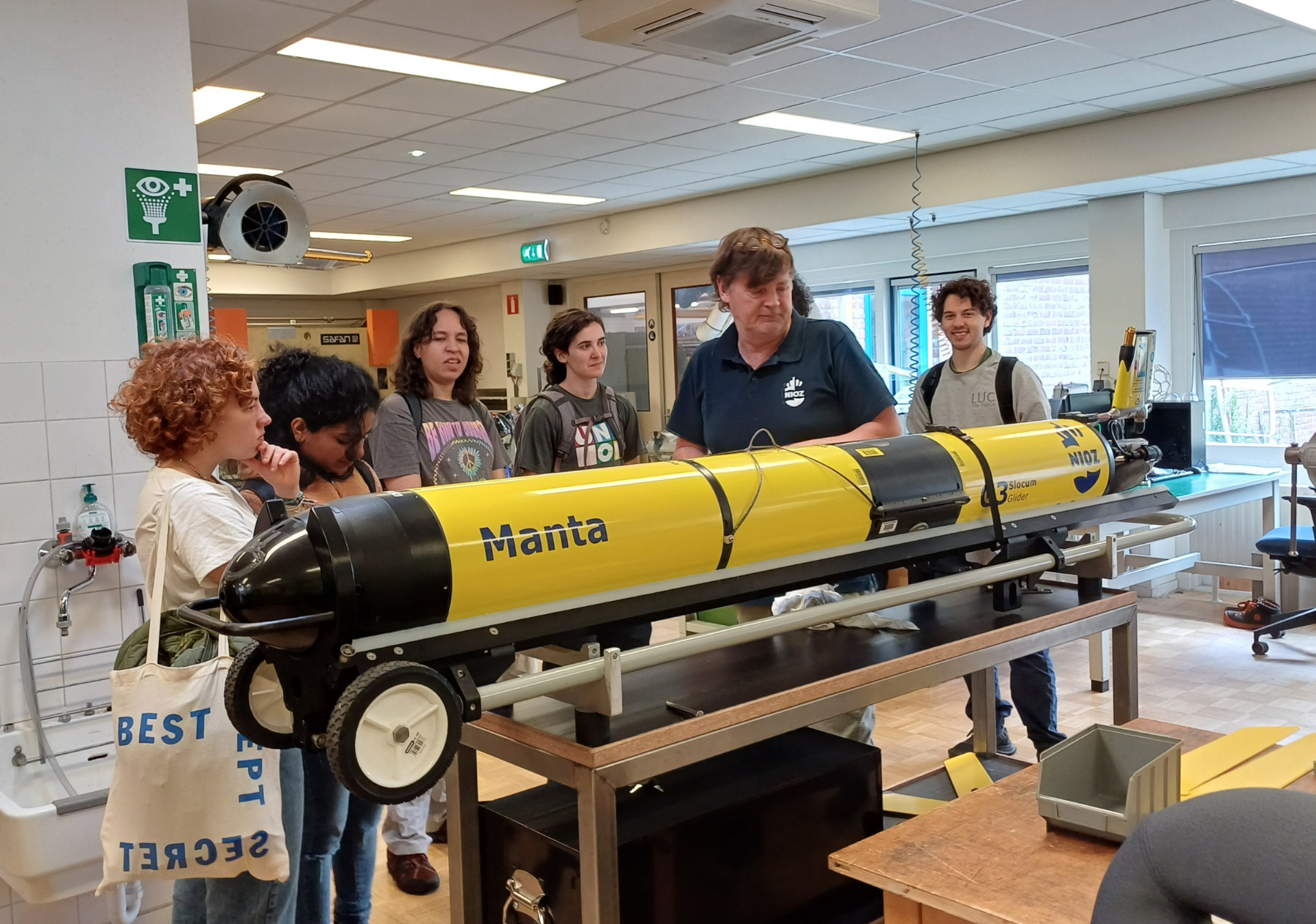
The fact that the real-sized model was being built with such accuracy reminded me of the fascination some people have for stars and why people usually really like to visit astronomical observatories: usually you cannot look into the depths of the night skies, just as you cannot look into the depths of the ocean. With gliders and telescopes a part of the unknown is shown to the outer world. I really liked the fact that this model was being great for the purpose of science communication too.
Next to the fine mechanical services we visited the seaweed lab. In eleven tanks, green and brown sea weeds are grown and kept, and we were given insights in the life cycle of two of the weeds. We got answers to all of our questions, which were sometimes loads more scientific (by the marine biologists among us) than others:
One of the physicists: "Can you eat it?"
Answer: "Yes."
Reaction: * Several people trying out the seaweed *
The different backgrounds of everyone in the course make it even better to have these lab tours: everyone is enthusiastic, dares to ask questions and comes with a different approach.